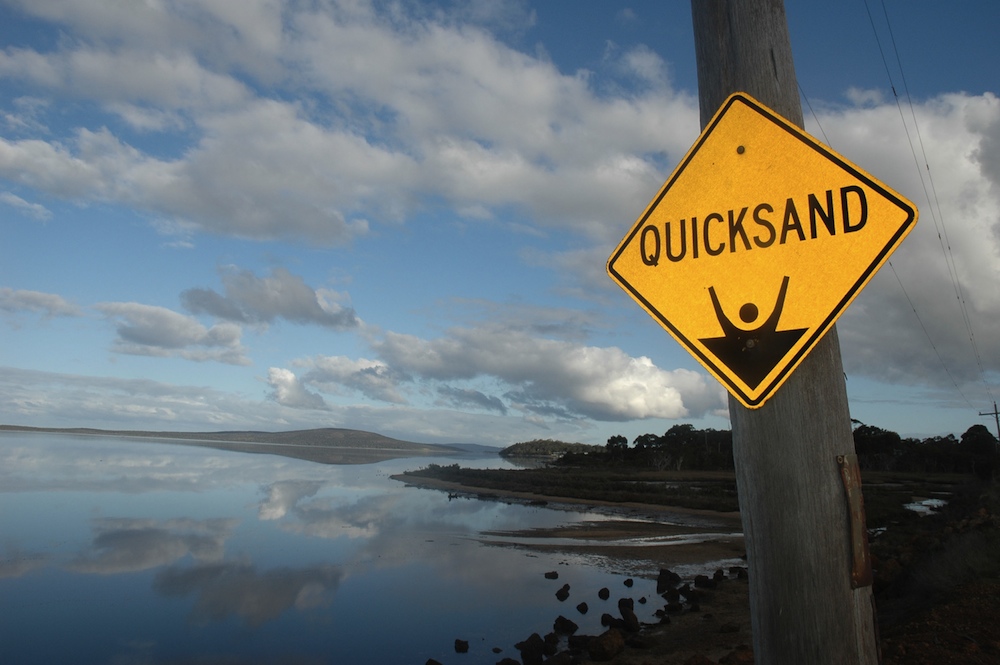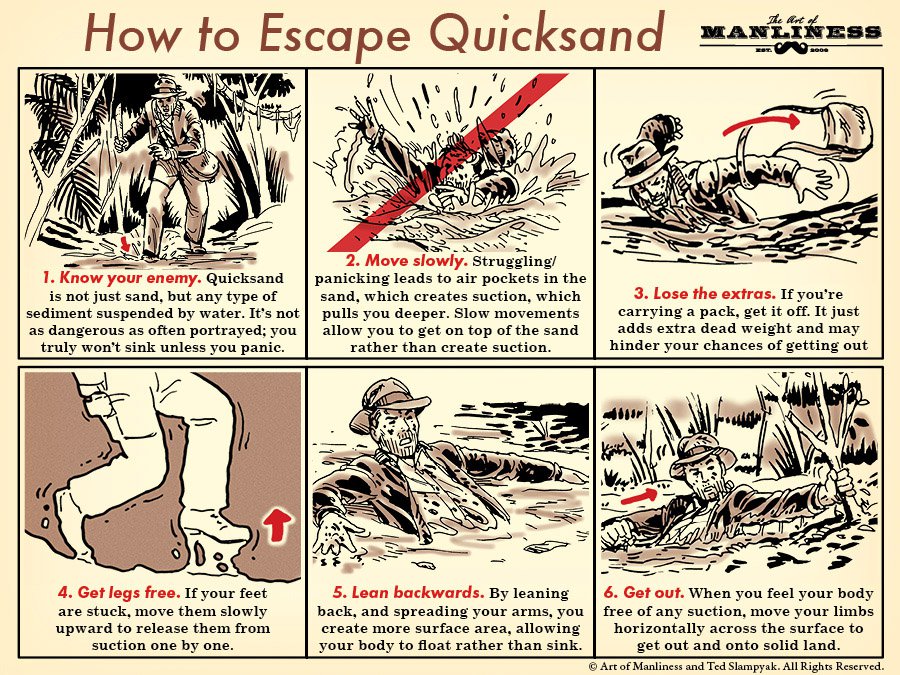Robert Drewe finds that scary things change with the generations and that quicksand isn’t what it used to be.
The conversation around the dinner table was about the things we found scary as children. My teenage daughter and twentyish son immediately mentioned thunderstorms, ghosts, the dark, ventriloquists’ dummies and clowns.
“Especially dummies and clowns,” said my son. He wasn’t crazy about the thought of an old bearded stranger prowling around our darkened house either. Even though it was Santa Claus.
My older, spider-fearing son was reminded that he also used to hide under the seat whenever we drove past a particular billboard advertising Johnnie Walker scotch. The jaunty striding-man logo gave him the creeps.
A ten-year-old joined the conversation. He agreed about ghosts and the dark, and he added current scary threats from the screen: zombies, T-Rex, space aliens, tsunamis and, thanks to current Australian events, sharks.
“What about quicksand?” I suggested, the idea of quicksand having deliciously scared me as a child. Hardly a Saturday movie passed without someone being sucked under that deceptively bland surface. The hero might be rescued in the nick of time by a convenient trailing vine, but the bad guy disappeared into the bottomless ooze – outlasted only by his floating hat.
My friends and I used to roam the river foreshore looking for quicksand, and fantasising about luring the local bullies into it. We’d let them sink up to their eyeballs before deigning to pull them out. Or — in “Dog” Hopkins’ case – maybe not.
Really?, was the muted response around the table. Quicksand didn’t seem so scary nowadays. Whatever happened to it anyway, I wondered. Any adventure flick worth the name used to have a quicksand scene.
People disappearing into quicksand was an expedient plot device. The gimmick had its heyday in the 1960s when three per cent of all films showed someone sinking in a quagmire of mud, sand, or clay.
Quicksand featured in everything from wide-screen, Oscar-winning sagas to TV amusements. T.E. Lawrence’s servant boy Daud dies in quicksand in Lawrence of Arabia, while in an episode of Batman the Dynamic Duo fall into quicksand and Batman (more or less correctly) instructs Robin to “stay perfectly still”. Two of the earliest fictional references to quicksand occur in Les Miserables, where Victor Hugo devotes two chapters to it, and in Robert Louis Stevenson’s The Pavilion in the Links.
Since then, actors, characters and shows as wide-ranging as Tarzan (three times), Mickey Rooney, Jungle Jim, Sherlock Holmes, Flash Gordon, Robinson Crusoe, Lucille Ball, John Belushi, the Swiss Family Robinson, David Niven, Gunsmoke, the Monkees, Gilligans’s Island, Doctor Who, Sonny and Cher, and Mel Brooks have engineered quicksand encounters. So have the soaps, As the World Turns and Days of Our Lives.
A list of quicksand horror flicks – including at least four called, unsurprisingly, Quicksand — is as long as it’s imaginative. A sample: The Lunatic Frog Women, Beast of the Dead, Bloodlust, Sin, Satan’s Mistress, Amuck!, Beastmaster, Escape from Hell, House of Frankenstein and, our favourite, Soggy Bottom USA.
The proliferation of quicksand movies has given rise to an internet subculture dedicated to the topic. So it’s interesting to discover that quicksand is harmless. A human is unlikely to sink entirely into quicksand due to the higher density of the fluid (assuming the quicksand is in otherwise dry ground and not underwater, but even if underwater, sinking is still unlikely).
Quicksand has a density of about two grams per millilitre, whereas the density of the human body is about one gram per millilitre. At that level of density, completely sinking is impossible. Descending to the waist is possible, but no further. Even objects with a higher density than quicksand will float on it — until they move. Panicky movements may cause a person to sink deeper, hence the belief that quicksand is dangerous. Since it increasingly impairs movement, this could lead to other factors, such as incoming tides, weather exposure or wild animals, harming a person who was trapped to the waist.
So how do you get out of it? How To Escape Quicksand, an article in the satiric magazine The Art of Manliness, advises to slowly and progressively wriggle your legs around. This creates a space between the legs and the quicksand through which water can flow to loosen the sand.
These days quicksand is a metaphor for trapped, increasingly disastrous situations where individuals, corporations, economies, even countries (Vietnam, Afghanistan, et cetera) are sunk in a quagmire, sucked into a morass from which escape is difficult. In his 1963 “I have a dream” speech, Martin Luther King implored Americans to “lift our nation from the quicksands of racial injustice.”
Fortunately my brother wasn’t present for this discussion on family fears. Quicksand didn’t worry him, but he would have hated me bringing up his childhood terror of balloons and umbrellas.







